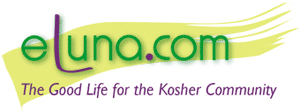
A Different Night by Noam Zion and David Dishon, Shalom Hartman Institute, 2006. 180 pages.
Noam Zion and David Dishon have written a Passover haggadah for families who want to create a new atmosphere at their seder. In the foreword to the book they explain that the desire with this book was to make the seder “more responsive to contemporary needs and simultaneously truer to the spirit of the Rabbis as educators.” The book is the same text of midrash as it always was, but Zion and Dishon have created a format that promotes growth and understanding through dialogue and reenactment. For example in the section of the Mah Nishtana, a ceremony that has become a dreaded performance for the youngest member of every family, the authors offer a new wrinkle to make the tradition more inclusive. They suggest going around the table and sharing personal questions about Pesach and the Exodus, then by addressing those questions invite participation and maybe even take some heat off of the youngsters. Also included is the Afghani custom of hitting each other with green onion during the song of Dayenu.
Others topics encourage thought, like asking children to name the one object they would carry with them out of Egypt. At the same time, adults are provided with themes to consider in what Zion and Dishon call “a leap of solidarity back into the founding event of Jewish nationhood.”
One of the most special sections of the book deals with the four sons. The authors bring us 15 pages of different drawings, so that we can discuss together the nature of the sons in different time periods and in the imagination of different artists. They show us Abrabanel's opinion that the wise child may really be a wise guy trying to show off his knowledge instead of the good guy that we have always thought him to be.
The sources quoted are as varied as Reb Nachman of Braslav, and Winston Churchill. When Zion and Dishon recommend a discussion, they offer all opposing opinions. That invites guests to open a dialogue across the range of religious and ideological perspectives. The authors point out a small warning: “Don’t Overeat!” This book offers much material for discussion and will provide an insightful addition to your Seder for years.
About the Authors:
Noam Sachs Zion
Born in Jerusalem in 1948 to American volunteers in the Hagana, Noam grew up in Minneapolis and earned a degree in philosophy at Columbia University. During the 1973 Yom Kippur War he went to Israel as a volunteer and became an oleh (new immigrant). At the Shalom Hartman Institute since 1978, he has been director of the Russian Scholars Program and of curriculum development in Israeli public schools. His specialty is the interface between Bible, Midrash, art and movies. His publications include Cain and Abel: The Origins of Human Violence and The Zealot: National Hero or Villain? He was a contributor and a consultant to Talking About Genesis, a resource guide for the Bill Moyers Genesis Series. Noam, who is married to Marcelle, is the proud father of five children.
David Dishon
Born and raised in Philadelphia, David completed bachelor's degrees at the University of Pennsylvania and Gratz College. He made aliyah in 1973 and in 1976 completed his MA in Jewish History at the Hebrew University of Jerusalem specializing in the Talmudic period. At the Shalom Hartman Institute since 1978, he has published a widely read booklet, The Culture of Dissent in Judaism (Schocken, 1984 in Hebrew), and numerous educational publications for SHI. David has been active in teaching Judaica in Israeli high schools and teacher training institutes, both in the religious and secular frameworks. In 1985 he co-founded the Charles E. Smith Religious High School of the Shalom Hartman Institute, at which he is a central teacher and educator and serves as director of Jewish studies. David and his wife Gila have four children.
This book is available at:
Gur Arieh Bookstore,
Yoel Solomon St 8,
Jerusalem
Tel: 02-625-7486.
Fax: 02-625-4265
Books can be ordered from eLuna.co, for delivery in Israel only. |

